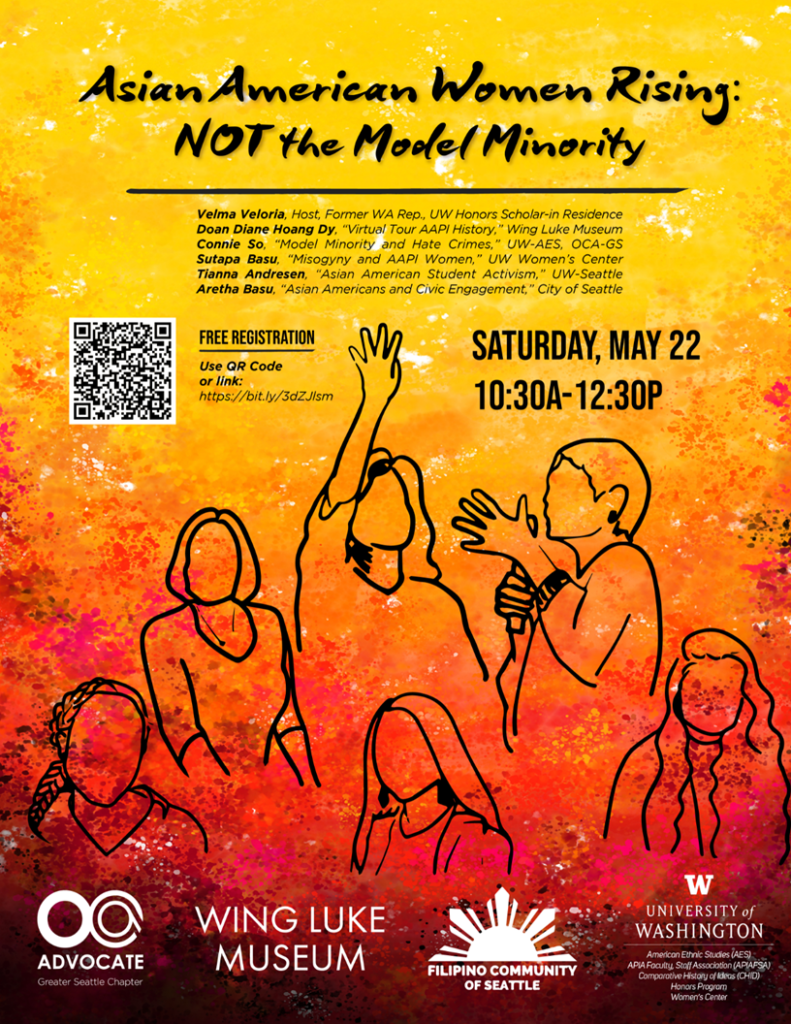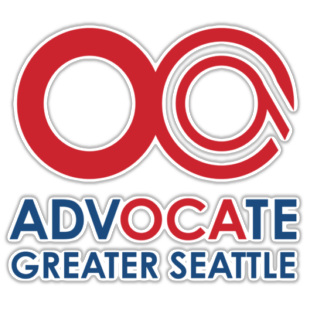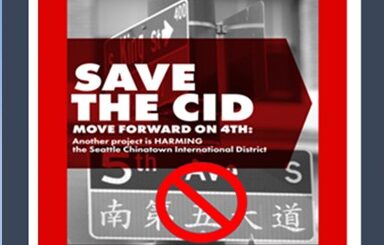How we celebrate AAPI Heritage Month

By Connie So
OCA Greater Seattle
Since 1992, the month of May is dedicated to Asian American and Pacific Islander Americans (AAPI). Yet 30-31 days is inadequate to make up for our “invisibility.” While acknowledging the diversity and inadequacy of this broad category, I want to highlight three key points that people do share in common.
According to the 2010 US Census, Asian Americans are persons “originating in any of the original peoples of the Far East, Southeast Asia, and the Indian subcontinent.” Lately, people of Central Asia and North Asia are often included. In the Seattle School District, there are 66 different ethnic groups under the term Asian. Meanwhile, Pacific Islander Americans are natives of “Hawai‘i and other Pacific Islands,” comprised of the Oceanic regions of Polynesia, Micronesia, and Melanesia. There are more than 100 ethnic groups included in this category. Collectively, we are the fastest growing group in America.
While these definitions are an improvement over the pre-1970s Eurocentric concept of the “Oriental,” it still ignores the differences between, and within, AAPIs in terms of history, culture, generation, language, values, and other demographic factors. These differences cannot be ignored because they have significant implications for programs impacting education, employment, and politics, including bilingual ballots, affirmative action, immigration, health bills, and hate crimes, to name a few.
Despite our diversity, many people in America make no differentiation and only see us as “perpetual foreigners” with an inaccurate monolithic identity as “model minorities” obeying whites or threatening “gangsters” who “disobey” whites. In truth, we have not moved far from the days when we were all seen as a “yellow peril,” threatening the purity of white America. While I recognize and cherish our differences, given today’s events, I want to reflect and acknowledge some of our shared issues as AAPIs in the United States:
- Common historical forces. Most AAPIs can date our larger pattern of immigration to the U.S. after the 1840s. Many of our ancestors were pushed out of their native countries because of poverty and political strife, often caused and/or abetted by Western colonization — especially in the case of Hawai‘i, American Samoa, Guam. Many were, and still are, attracted to the U.S. by the American Dream — fed to us through hegemonic, colonial education. Unfortunately, our early immigrants were greeted by exclusion laws, hostile acts, and subordinate status. Even now, there are lengthy immigration lines, Muslim bans, racial profiles, and, upon arrival, constant reminders that we do not belong here. How many times have we been asked, “What are you?” “Where are you from?” “Seattle? No, where are you really from?”
- Common patterns of historical discrimination by members of the host society. Professor Sucheng Chan listed seven types of hostilities historically faced by all AAPIs in the U.S., namely racial prejudice (e.g., racialized terms and comments about our features, culture and now, the Kung Flu and China Virus); economic discrimination (e.g., 1852 California foreign miners tax to current-day “foreign certification” directed against non-Western Europeans); social segregation (e.g., redlining that originally beget ethnic enclaves like Chinatowns); physical violence (e.g., 1852 Rock Springs Massacre to current-day anti-AAPI hate); incarceration (e.g., criminalization of early API to the internment of Japanese Americans during WWII); political disenfranchisement (e.g., 1790 Naturalization Act denied all API naturalization rights until 1952, even then, Samoans only “earned” right to U.S. naturalization in December 2019); and finally, exclusion and segregation laws (e.g., 1882 Chinese Exclusion, 1907-08 Gentlemen’s Agreement, 1917 Barred Zone Act, etc).
- Common responses to inequality and discrimination. Historically, when faced with discrimination from white America, we always fought back. We fought physically, socially, and legally for our rights, even when it was said that we only had a “Chinaman’s Chance” of winning when after People v. Hall (1854), the Chinese, like Native Americans, were not allowed to testify against whites in a court of law.
Socially, AAPIs have come together to provide support through family associations, temples, churches, language schools, and cultural clubs to provide support and allowed AAPIs to maintain our proud heritages, even as America pushes assimilation.
We took our challenges to the Supreme Court, we went on strikes against railroad companies, canneries, and agricultural plantations, and we created organizations to help one another. In the 1980s, we gained an apology and reparations from the US government for the World War II internment order. In 1982, we sought justice for Vincent Chin; in 1989, we came together to demand that the Stockton Schoolyard Massacre killing five Southeast Asian school kids and wounding another 32 be considered a hate crime; after 9-11, we condemned the domestic terrorists targeting Sikhs; and now, we come together after far too many AAPIs, especially the elderly and women, have been mocked, bullied, and killed after a President encouraged hate by using terms like “kung flu” and “China virus” to demonize us. We are coming together now to express our outrage and sorrow after the tragedy of the Atlanta Massacre, FedEx shootings, and all the other beatings and deaths. We are fighting now, to hold people accountable for their insidious words, “protected” ignorance and demand true acknowledgement of our Asian American and Pacific Islander American histories. This is how we celebrate AAPI Heritage Month.
Come celebrate AAPI Heritage Month with the virtual event Asian American Women Rising: NOT The Model Minority on Saturday, May 22 from 10:30 a.m. to 12:30 p.m. Presented by: University of Washington’s American Ethnic Studies (AES), APIA Faculty, Staff Association (APIAFSA), Comparative History of Ideas (CHID), Honors Program, Women’s Center; Filipino Community of Seattle, OCA – Greater Seattle Chapter; Wing Luke Museum. Free registration here.








